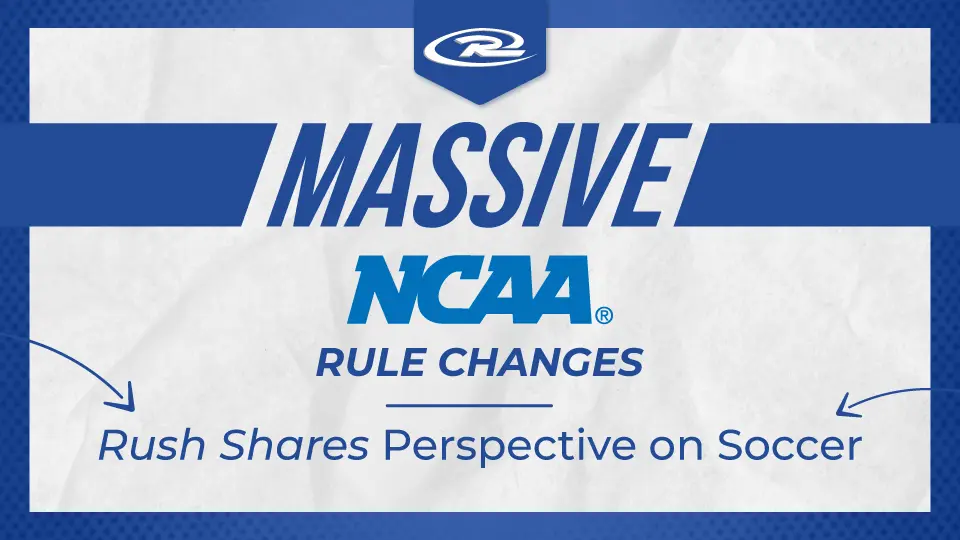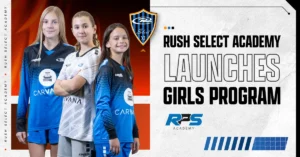
Perspective: Massive Transformation in College Soccer

The reverberations from the groundbreaking NCAA lawsuit over name, image, and likeness (NIL) rights are sending shockwaves through the world of college athletics, and soccer is no exception. The settlement, which includes a revenue-sharing model among the Power Four conferences (ACC, Big Ten, Big 12, and SEC), marks a pivotal moment that will reshape the landscape of college sports for years to come.
Let’s look at the key changes in NCAA Men’s Soccer
Division I Men:
- Stricter limitations on substitutions, including no re-entry after leaving the game. Teams are allowed 6 substitution moments per game.
If teams opt into the Revenue Sharing Model
- Roster Sizes are maxed out at 28 players
- No scholarship limits
- Sharing Revenue with all athletic players
While the potential for increased revenue presents exciting opportunities for athletes, it also introduces a complex web of financial considerations for athletic departments. As the Power Four schools navigate the intricacies of revenue sharing, non-revenue sports like soccer may face budgetary constraints. This could lead to reduced resources, affecting everything from coaching staffs to travel budgets, facility upgrades, and support staff positions.
Moreover, the lawsuit’s impact extends to the structure of teams themselves. Roster size and scholarship limitations are undergoing scrutiny as athletic departments grapple with the financial implications of the new landscape. These changes could significantly alter the competitive dynamics within conferences, potentially leveling the playing field for some programs while creating new challenges for others. For example, smaller programs may find it more difficult to compete for top recruits, while established powerhouses may have the resources to build deeper rosters and offer more lucrative NIL deals.
The transfer portal, already a disruptive force in college soccer, is poised to become even more influential. As athletes gain greater control over their athletic futures, the portal is likely to see a surge in activity. This increased player movement will undoubtedly reshape rosters and create a more fluid recruiting environment. Coaches will need to adapt their strategies to compete in this dynamic landscape, placing a premium on building strong relationships with potential recruits, developing a clear program vision, and fostering a positive team culture.
The substitution rules for Division I men’s soccer have also been modified, limiting the number of substitutions to 6 moments per game and eliminating reentry. This change is expected to have a profound impact on game strategy, forcing coaches to adopt more conservative approaches and emphasizing player fitness, endurance, and tactical versatility. It may also lead to an increased emphasis on player development and the ability to manage in-game situations effectively.
As the dust settles on these sweeping changes, the lines between different divisions of college soccer are likely to blur. The increased financial resources available to Power Four programs could create a wider talent gap, making it increasingly difficult for mid-major and Division II schools to compete for top recruits. However, these challenges may also present opportunities for smaller programs to differentiate themselves by focusing on player development, creating a unique student-athlete experience, and building strong relationships within their local communities.
High school athletes will need to adapt to this new reality by becoming more proactive in their recruiting process. Building a strong personal brand, showcasing athletic abilities through highlight videos, and networking with coaches will be essential for attracting attention from college programs. Additionally, players may need to consider a wider range of options, including junior colleges and Gap Year Programs, as the traditional path to Division I success becomes more competitive. Athletes should also focus on developing a strong academic profile, as many colleges prioritize well-rounded student-athletes.
Conference realignment is another potential consequence of these sweeping changes. As schools weigh the financial implications of the new revenue-sharing model and the competitive landscape within their current conferences, some may explore opportunities to join different leagues. This could lead to significant shifts in conference alignments, creating new rivalries and challenges for athletic departments, and potentially affecting the overall balance of power in college soccer.
Ultimately, the full impact of these changes on college soccer will unfold over time. However, one thing is clear: the sport is entering a new era defined by uncertainty and opportunity. Those programs that can adapt quickly and effectively to these challenges, while maintaining a strong commitment to the student-athlete experience, will be best positioned to thrive in the years to come.
Listen to the full CAP Chat episode where Josh Tyler and Tyler Tomlinson dive deep into the massive changes for NCAA and the impact of the NIL lawsuit.




